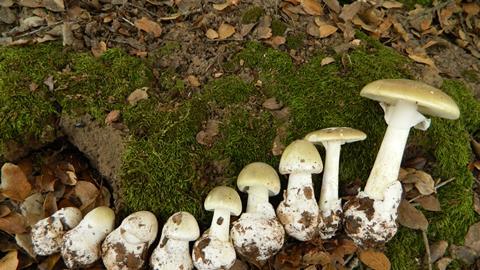The known contrast agent indocyanine green can be used as an antidote to the world’s deadliest mushroom, Chinese researchers show in Nature Communications.
More than 90% of deaths from poisonous mushrooms are caused by Amanita phalloides, known as the death cap. Until now, there has been no antidote, but by screening with CRISPR, Bei Wang, Arabella Wan and colleagues at Sun Yat-sen University in China found both how the toxin works and a potential antidote.
The toxin, α-amanitin, seems to require the catalytic enzyme STT3B, which is part of the N-glycan biosynthesis pathway and works with STT3A to perform post-translational glycosylation in the endoplasmic reticulum. Once the target was identified, researchers screened a library of FDA-approved drugs for STT3B inhibitors. Of the possible candidates, indocyanine green (ICG) came out on top; it forms hydrogen bonds and a pi-stack with the toxin. ICG is normally used as a contrast agent and fluoresces in the near-infrared spectrum.

In cells and mouse liver organoids, ICG reduced the toxicity of α-amanitin and prevented cell death by inhibiting STT3B activity. Even when tested in living mice, ICG showed clear antitoxic activity and it did not cause any side effects. These seem to be very promising results.
Wang, B. et al. (2023) Nat. Commun. 14(2241), DOI: 10.1038/s41467-023-37714-3













Nog geen opmerkingen